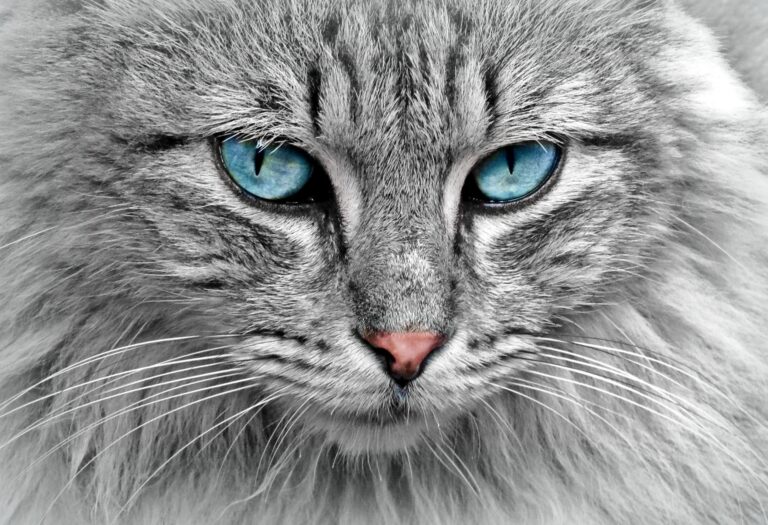The belief that cats have nine lives is a long-standing and enduring myth that has captured the imagination of people around the world. This notion has persisted for centuries, often as a way to explain the seemingly miraculous escapes and survival skills displayed by these enigmatic creatures. In this article, we’ll delve into the origins of the “nine lives” myth, dissect the reality behind it, and explore the fascinating world of feline resilience.
The Myth of Nine Lives:
- Ancient Origins: The concept of cats having multiple lives can be traced back to ancient cultures. In Egyptian mythology, cats were revered and associated with the goddess Bastet, who was often depicted as a lioness or a woman with a lioness’s head. Bastet was believed to have nine lives, and this association may have contributed to the myth.
- Surviving Near-Death Experiences: Cats have a remarkable ability to survive accidents and seemingly perilous situations. They often land on their feet after falling from heights, escape dangerous encounters, and recover from injuries that might be fatal for other animals. These behaviors may have contributed to the belief in multiple lives.
- Adaptation and Agility: Cats possess exceptional agility and reflexes, which allow them to navigate treacherous terrain and avoid danger. Their keen senses of hearing and sight further enhance their ability to detect potential threats and react swiftly.
The Reality of Cat Resilience:
- Survival Instincts: While cats may appear to defy death on numerous occasions, it’s essential to recognize that their “nine lives” are a metaphorical concept, not a biological reality. Cats do not possess multiple lives in the literal sense.
Cats’ remarkable survival skills are a result of their innate instincts, agility, and the adaptability of their bodies. They have evolved to be efficient hunters and escape artists, which contributes to their ability to avoid or recover from life-threatening situations. - The Righting Reflex: Cats have a unique physiological trait known as the “righting reflex,” which allows them to reorient themselves in mid-air during a fall. This reflex, combined with their relatively lightweight bodies and flexible skeletal structure, often enables them to survive falls from significant heights.
- Healing Abilities: Cats have impressive healing abilities, and their bodies are known for their rapid tissue repair. This can contribute to their recovery from injuries that might be more challenging for other animals.
- Luck and Probability:
Unpredictable Events: Life is full of unpredictable events, and this holds true for cats as well. While some cats may find themselves in hazardous situations, others may not encounter such circumstances at all.
The likelihood of a cat surviving a dangerous encounter can be influenced by factors that are often beyond their control, such as being in the wrong place at the wrong time or encountering a particularly aggressive or skilled predator. - Variability in Situations: Dangerous encounters for cats can vary widely. Some situations may involve physical threats from other animals, falls from great heights, or accidental injuries. Each of these situations presents a different set of challenges and risks.
- The outcome of these encounters can also depend on the specific circumstances. For example, a cat’s chances of surviving a fall from a significant height may vary based on factors like the terrain below, the cat’s angle of impact, and even weather conditions.
- Individual Variability: Cats, like humans, are individuals with their unique physical attributes, temperaments, and abilities. Some cats may be particularly agile, resourceful, or lucky, which can increase their chances of surviving dangerous situations.
- Conversely, other cats may not possess the same level of agility or may be more prone to accidents. Their individual characteristics can influence the outcome of encounters with danger.
- Medical and Veterinary Care: The role of luck and probability also extends to the post-encounter phase. Cats that survive dangerous situations may still require medical attention and veterinary care to recover fully.
- The availability of timely medical care can significantly impact a cat’s chances of survival and recovery. Some cats may receive immediate treatment, while others may not have access to veterinary care in time.
- Environmental Factors: Environmental factors, such as the presence of hiding spots, access to food and water, and the availability of shelter, can also influence a cat’s survival in dangerous situations. Cats that have access to safe hiding places or resources may have a better chance of survival.
- Human Intervention: In some cases, human intervention plays a critical role in a cat’s survival. People who discover injured or distressed cats may provide aid, take them to a veterinarian, or offer them shelter and care.
- Population Statistics: When considering the survival of cats in dangerous encounters, it’s important to recognize that population statistics play a role. While some individual cats may survive such situations, not all cats in similar circumstances may be as fortunate.
- Luck and Probability:
4. Veterinary Care: In cases where cats are injured or unwell, their chances of recovery are significantly improved with proper veterinary care. Prompt medical attention can make a substantial difference in their survival.
Conclusion:
In conclusion, the belief that cats have nine lives is a charming and enduring myth rooted in ancient cultural symbolism and the remarkable survival skills of these captivating animals. While cats are known for their agility, resilience, and ability to escape danger, they do not possess multiple lives in the literal sense. Instead, their survival instincts, physical adaptations, and a bit of luck contribute to their uncanny ability to navigate the challenges of their environment. So, while cats may not have nine lives, they continue to amaze and enchant us with their remarkable abilities and resilience.


